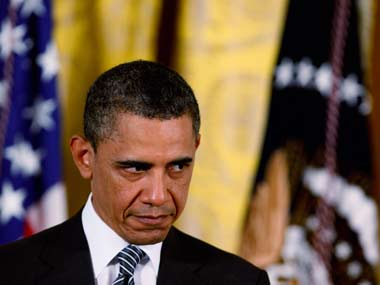In December 2010, when the results of an international standardisation test - in which students from China were participating for the first time - were published, they were stunning.
Students in Shanghai comprehensively outscored their counterparts in dozens of other countries, in reading, arithmetic and science. Students from the US, on the other hand, finished 23rd or 24th.
Predictably, it sent educators and education policymakers in the US into paroxysms of anguish. “We have to see this as a wake-up call,” Secretary of Education, Ame Duncan said. “We can quibble, or we can face the brutal truth that we’re being out-educated.”
[caption id=“attachment_11316” align=“alignleft” width=“380” caption=“Evidence points to an element of overstatement in Obama’s repeated articulation of the coming challenge from China and India. Getty Images”]  [/caption]
President Obama’s latest exhortation to American school children - that they risked being left behind by wizards in Beijing and Mumbai if they didn’t up their own game - is entirely in line with that frequently invoked ‘warning’ about a “ Sputnik-moment”.
Yet, the view from China (and India) of their own education systems is vastly different. Jiang Xueqin, deputy principal of Peking University High School, looked at the same standardised test results, and saw signs of a larger problem with the Chinese education system.
While Chinese schools were great at preparing students for standardised tests, particularly when the children themselves were goaded by parenting methods modelled on Amy Chua’s, they were rotten at preparing them for the knowledge economy of the future.
Likewise, although the most recent Census survey in China revealed that the number of people with college education had risen 147% over the past decade, the reality on the ground is that millions of college graduates cannot find a job - or earn any more than a migrant worker earns.
Much the same is the case in India. Although India graduates millions every year, the software industry’s trade group NASSCOM estimates that nearly 75% technical graduates and more than 85% general graduates are “unemployable” in workplaces that require skills.
Serial entrepreneur-turned-academic Vivek Wadhwa too has a sober assessment of the “challenge” to America from India (and China).“In India, the education system is pretty weak, and if you went simply by degrees and resumes, you wouldn’t hire anyone,” he noted in a 2008 interview to Knowledge@Wharton. Indian companies work around the deficiencies of the education system by providing on-the-job training programmes, which run “like a boot camp. By the time you’re done with that, you’ve got the equivalent of a master’s degree.”
All of which points to an element of overstatement in Obama’s repeated articulation of the coming challenge from China and India. Although it’s obvious they are intended as a call to action to Americans, they feed excessive oversimplifications and overly hyped invocations about the rise of China and/or India.
Indicatively, last year, when a football game in Philadelphia needed to be postponed owing to heavy snow, the Pennsylvania Governor used it to rant about the decline of America - and launch into an out-of-context flagging of China’s rise.
“We’ve become a nation of wusses,” he said and drew unfavourable comparisons with how the Chinese might have responded. “If this was in China, people would have been marching down to the stadium, they would have walked and they would have been doing calculus on the way down.”
That nonsensical non sequitur got a royal smackdown from Adam Segal at the Council of Foreign Relations, who also offered a more realistic assessment of the limitations of China and India’s education environment.
Likewise, informed opinion in China and India understands the context in which Obama hypes up Chindia’s rise. It just doesn’t flip for his flattery.


)
)
)
)
)
)
)
)
)



